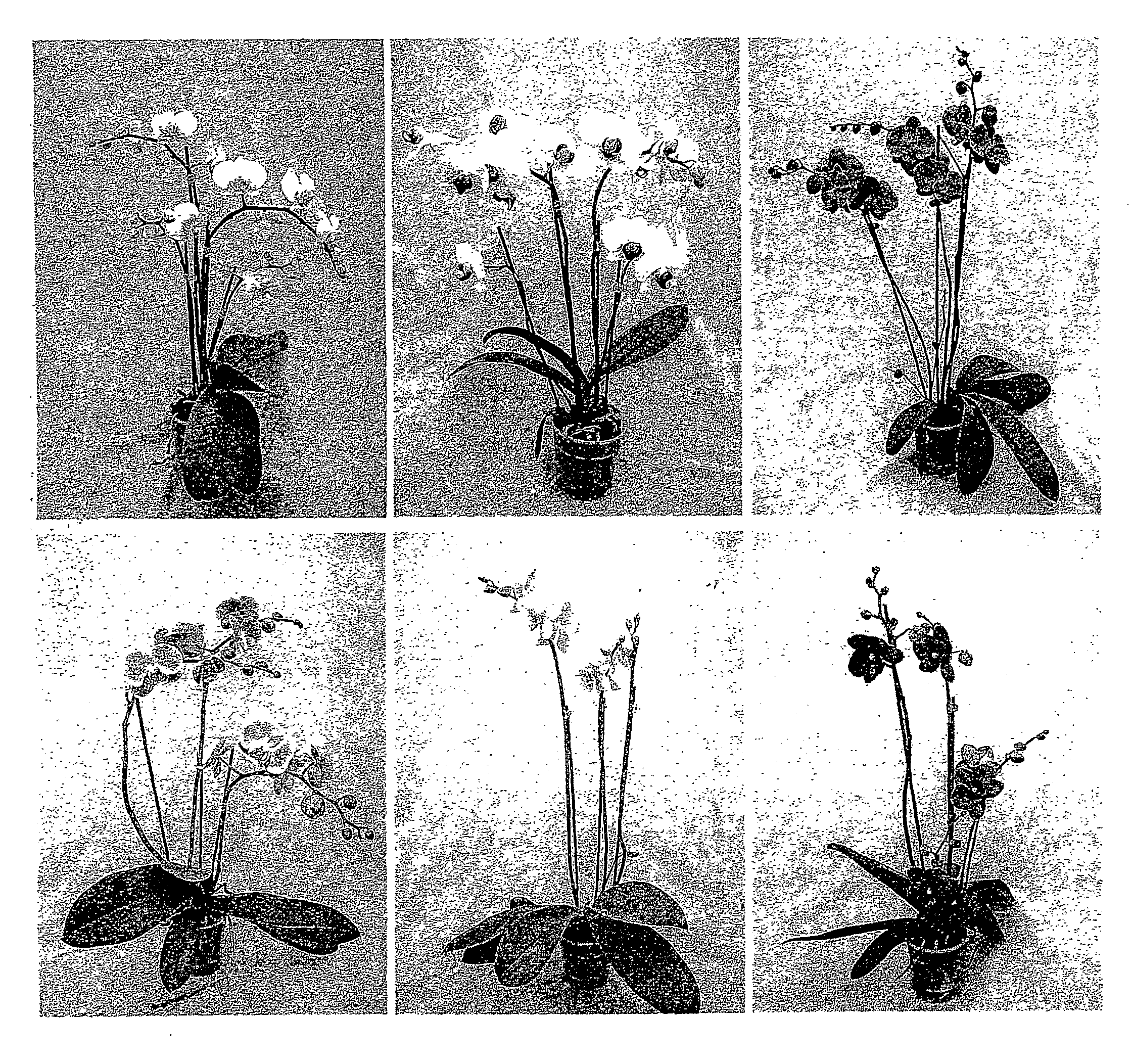Orchid Culturing Method
a technology for orchids and culturing methods, applied in the field of orchid culturing, can solve the problems of increasing the cost of growing plants, and achieve the effect of increasing the number of inflorescences
- Summary
- Abstract
- Description
- Claims
- Application Information
AI Technical Summary
Benefits of technology
Problems solved by technology
Method used
Image
Examples
example 1
[0041]In June 2004 three groups of Phalaenopsis plants have been induced 6 months after potting. For testing 100 plants were treated and 100 non-treated controls were used per variety. Both groups of plants were cultured as described above. Induction of spiking started at week 28 by spraying a solution of 1000 ppm 6-BAP (BAP-10, Plantwise, Louisville, Ky. USA), 0.1% Zipper, 1% DMSO] to the treated plants, while the controls did not receive this treatment. The results in Table 1 show the number of inflorescences per plant for the different testgroups.
TABLE 1AverageAveragestemcountstemcountVarietyuntreatedtreatedDutch Lady1.583.84Maliby Leopard1.513.12Anthura Malaga1.233.61Lippe Flair 3441.323.38Golden Treasure1.442.97Brother John Red Delight1.133.20
[0042]From this experiment it appears that groups of orchids of at least 5 plants per variety, or alternative 10, 20, 30, 40, 50, 100 or 1000 plants, can be produced with a method as described above, which have on average more than 2 inflo...
PUM
 Login to View More
Login to View More Abstract
Description
Claims
Application Information
 Login to View More
Login to View More - R&D
- Intellectual Property
- Life Sciences
- Materials
- Tech Scout
- Unparalleled Data Quality
- Higher Quality Content
- 60% Fewer Hallucinations
Browse by: Latest US Patents, China's latest patents, Technical Efficacy Thesaurus, Application Domain, Technology Topic, Popular Technical Reports.
© 2025 PatSnap. All rights reserved.Legal|Privacy policy|Modern Slavery Act Transparency Statement|Sitemap|About US| Contact US: help@patsnap.com



